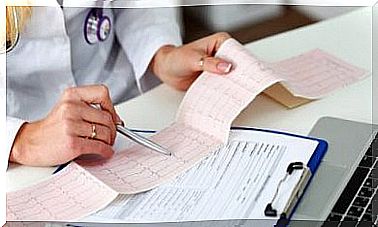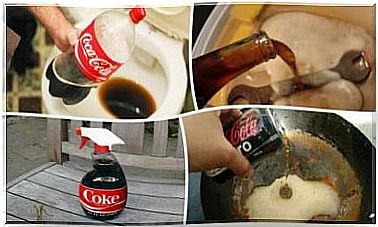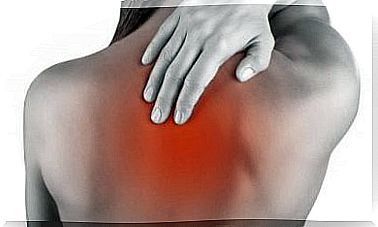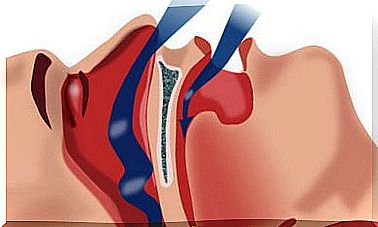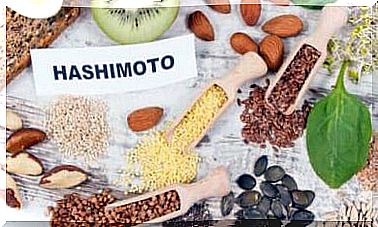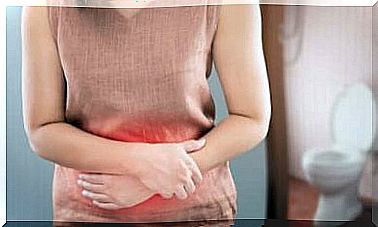Important Habits For Recovering From A Pre-Infarction
If you have suffered from a pre-infarction, it is essential to improve your lifestyle and avoid all bad habits or extreme emotions that could put you in danger.

If you have suffered from a pre-infarction, you should know these tips to help your body achieve optimal recovery. In addition, adopting a different lifestyle is essential to prevent this serious cardiovascular problem.
Find out in this article what a pre-infarction is, what are its symptoms and how to act in the event of a crisis. We also want to share with you the best habits to help you recover. In this way, you will be able to improve your quality of life in a simple and natural way.
What is a pre-infarction?
Pre-infarction is also known as angina pectoris. It happens when there is a reduction in the amount of blood reaching the heart. This arterial problem requires immediate treatment and subsequent monitoring by a specialist doctor.
We know that pre-infarction is caused by excess fat stored in the (coronary) arteries which carry blood to the heart. However, it can also be caused by a blood clot.
Although cholesterol is one of the main causes of this disease, it can occur at any age and in people with different types of physical condition.
How do you know if you have a pre-infarction?
The symptoms preceding the infarction, which usually start gradually and slowly, are as follows:
- Pain in one or both arms
- Strong discomfort and feeling of tightness in the chest
- Anxiety, fatigue and difficulty breathing
- Nausea, dizziness and vomiting
- General discomfort
- Pain in the back, neck and stomach

What to do during a pre-infarction?
Once we know the symptoms, we also need to consider what steps we should take if we come across someone who is suffering from a pre-infarction or heart attack.
These are tips that you should know, because the reaction time is very important when faced with this type of problem and the life of the affected person depends on it :
- Call emergencies
- Try to calm the person down so that they can breathe calmly
- Loosen any clothing so blood can circulate better
- Ask the victim if they are taking any heart medication so that you can give them
It is essential to keep in mind that even if the person denies the symptoms, we should not be convinced. We’re going to have to follow a protocol of action.
We must avoid leaving the person alone and will not give them any medicine that was not prescribed by the doctor.
Guidelines for recovery
Avoid bad habits
If we have suffered from a pre-infarction, we already have a good reason to change the most common bad habits we have. First, let’s list the most serious factors that increase your chances of having another heart attack.
We must therefore correct them as quickly as possible:
- Smoking
- Obesity
- Sedentarism
- High cholesterol
- High blood pressure
Adopt good habits
What should we take into consideration when recovering from a pre-infarction?
- The severity of the heart attack determines how much rest we should take.
- We will try to avoid all kinds of worries, stress or euphoria.
- It’s important to get a good night’s rest and even take naps.
- As the days go by, we can gradually increase our activities and practice moderate intensity exercise.
- Don’t make sudden efforts or lift too much weight. We need to avoid overwork, as it can be dangerous to get a lot of blood pumping through the heart if there is still a blockage in an artery. We can start with short walks or simple housework.
- It is also important, as we mentioned before, to avoid alcohol and tobacco, as well as smoky places, even if we do not smoke.
Eat a good diet
Diet will be the key to balancing cholesterol and triglyceride levels, as well as regulating blood pressure. A good diet will also help us achieve a healthy weight and improve our overall quality of life.
Foods we need to reduce or eliminate:
- Fast or processed food
- Fried foods
- Industrial bakery products
- Sugars
- Poor quality oils
- Sausages
- Cheese
- Refined flour
- Processed dairy products
- Sweet and soft drinks
- Table salt
Among the foods that we should consume we find:
- Fruits and vegetables
- Homemade juices, gazpachos and smoothies
- Whole grains
- Legumes
- Whole and sprouted nuts and seeds
- Superfoods (spirulina, maca, nutritional yeast, hemp, cocoa, etc.)
- Mushrooms
- Algae
- Natural sweeteners: honey, stevia, xylitol, etc.
- Sea salt or Himalayan salt (in moderation)
- Pisces
- Eggs
